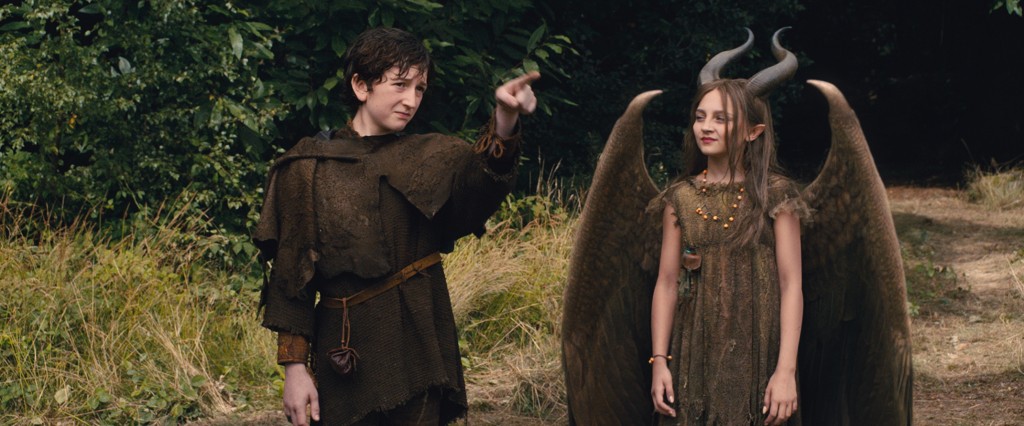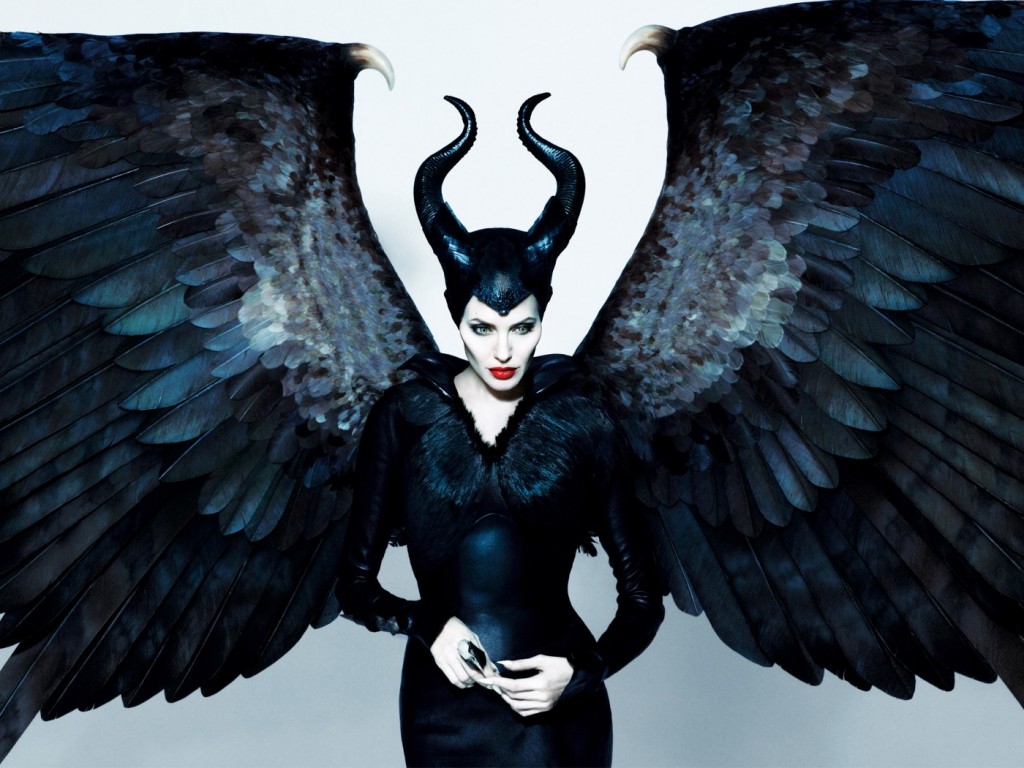Spoiler Warning
Maleficent seems to be part of a growing trend to retell fairy tales in a way that complicate their morality lessons. For those that don’t know, the character of Maleficent is based on a classic Disney villain that first appeared in Sleeping Beauty. The original depiction of Maleficent is monstrous; in my opinion she was one of the most terrifying villains aimed at young children that Disney has produced. In the original she is an extraordinarily powerful evil fairy. She takes offense at not having been invited to Aurora’s christening and so as her birth gift curses the child to prick her finger on a spindle and die. The three good fairies are only to mitigate the curse so that Aurora would fall into everlasting sleep instead of dying.
Movies like Maleficent and shows like Once Upon a Time have complicated the notions of good in evil. In these types of stories we are given a view that Evil is not simply birthed, it must be created and can come down to the different ways in which people react to trying circumstances. For example in Once Upon a Time, both Snow White and Regina face hardship from an early age. This shows us that what separates the two is that Snow is able to work through her pain and practice compassion, whereas Regina becomes fixated on vengeance and tallying up all the wrongs that have been done to her, further fueling her undying need for vengeance which creates a vicious cycle.
In Sleeping Beauty, we know nothing about Maleficent’s origins; she is just a proxy for the forces of evil. She does bad things because she is bad; there is no further analysis required. Her motivations are irrelevant–we are meant to think nothing could possibly justify the things she does. Maleficent serves to complicate what we know as evil. Instead of Maleficent simply being caricatured as the “mistress of all evil,” we are introduced to her as an innocent, young girl who is kind to strangers and and is concerned with looking after the other fairies. As she grows older, Maleficent becomes powerful and takes on the mantle of protector of her people–a role that she takes very seriously. She ends up leading the fairies into battle when the King of the humans comes to try and conquer them out of greed. In this version, Maleficent is portrayed as a woman with power who is also virtuous, at least until she is hurt very badly.
There is little development of Aurora the princess; she comes off as a very naive child, despite her circumstances, which force her to become somewhat self-reliant. In some ways while giving Maleficent her person-hood, the movie removes that from Aurora. She seems to be merely a plot device. While not ideal, I am OK with it in this context.
Generally, female fairy tale villains can be divided into two broad categories (obviously there are exceptions): vain sorceresses – think the Evil Queen in Snow White or women with power who are just evil for the sake of it. Aside from Maleficent, Ursula the sea witch also fits into this category as does the Queen of Hearts in Alice in Wonderland.
The subtext is of course that women with power are dangerous and cannot or should not be trusted. The hero or heroine of a fairy tale is often concerned with removing the evil woman from power and restoring the natural balance of things, so to speak. This is why reshaping these narratives is so necessary; it allows us to disrupt the common gendered tropes that exist in a way that has real power. It is nice that in this case the true evil is not a woman with power, but instead a man who has greed and ambition and is willing to do whatever it takes to get what he wants, even if it means hurting the only person who has shown him kindness.
Maleficent’s downfall is love or sentimentality; her old human friend uses his relationship against her for his own personal ambitions and she is left bereft. She becomes hard and un-trusting because the violation she suffered was so traumatic. Angelina Jolie’s portrayal of Maleficent’s pain and loss at this point is quite poignant. Maleficent believes that she is doing her best for her people but she can no longer relate to them as she is not the carefree young girl that she was. At the same time it is love that redeems Maleficent when she falls deeply in maternal love with the object of her curse. She realizes that her pain and isolation have stopped her from truly being who she wants to be, and she will no longer let the man who assaulted her have that power over her anymore. There is something quite lovely about this; it tells us that yes, love can sometimes lead to hurt and betrayal, but it can also bring out the best in us. Love is an overarching theme in Maleficent, and one of the best moments comes when Prince Philip, who has met Aurora once, is unable to wake her with true love’s kiss. The good fairies are highly disgruntled, and for it seems to prove that love cannot exist. However when her own kiss wakes Aurora, she realizes that love comes in many forms, and it is not always a lie.
At its core, Maleficent rewrites the morality tale that we all know. Instead of showing us that there is good and there is evil and never the twain shall meet, it tells us that sometimes people do bad things because they are hurt or scared but if they show remorse, realize the error of their ways, and act in ways that show love or kindness–they can be redeemed. The contrast between Maleificient and the king is quite clear. Whereas Maleficent has been able to move on from her hurt through love, the king becomes consumed by his desire for vengeance; it becomes the only in thing in his life and that ends up making him the real evil and leading to his downfall. As far as fairy tales go, Maleficent is the most feminist retelling of one that I have seen in a long time.
Gaayathri Nair is currently living and writing in Auckland, New Zealand. You can find more of her work at her blog A Human Story and tweet her @A_Gaayathri.



2 thoughts on “Monsters and Morality in ‘Maleficent’”
Comments are closed.